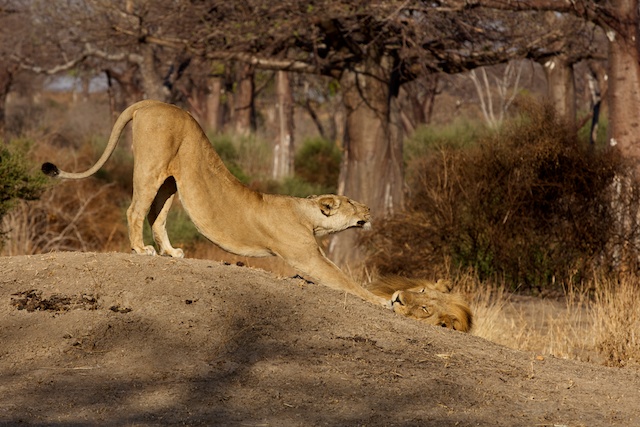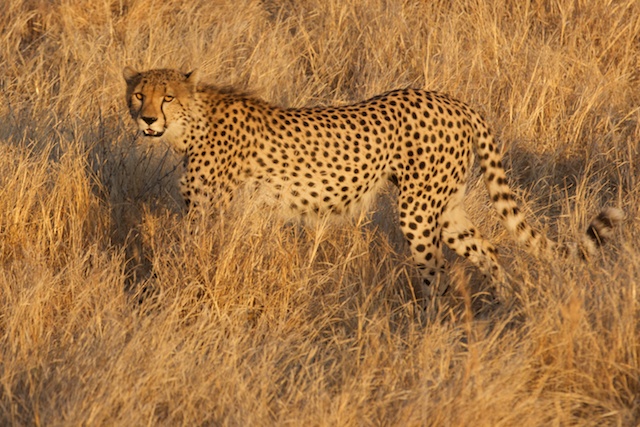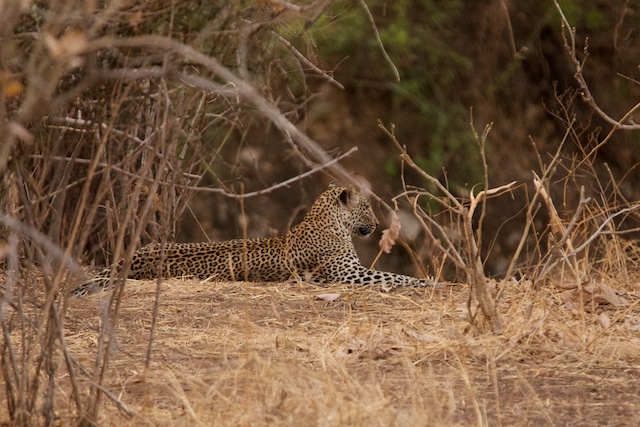Most people who come on safari hope to see some of the big cats – lion, leopard and cheetah.
Nearly everyone will see a lion, and more likely several. Depending on where you are on safari, there is a good chance of seeing one of the other two large felines.
Cheetahs are extremely prone to competition from other large predators (cats and hyenas), and are fairly limited due to habitat requirements. They prefer open grasslands with some cover or sparse woodland, although they fare well in arid semi-desert environments too. These are environments with few large predators competing with them and populations of hares and gazelles or similar sized animals to hunt. The Serengeti in Tanzania comprises the ideal habitats, populated with gazelles, although there is a high density of other competing predators such as spotted hyenas. Most people will see one or more cheetahs there.
In many areas, and especially in East Africa and Namibia, the leopard seems to be the prize of the three, not just because it is stunning beautiful, but also because it is not unusual to come on safari to one of these places, and see lions and cheetahs, but not a leopard. If you collected sightings records from people on safari, you may think leopards are the most endangered of the three.
Leopards are very elusive and are mainly active at night. Naturally the species seen less often becomes more sought after, and most East African guides will be very excited when these secretive spotted cats appear.
Surprisingly leopards are the least endangered large cat. They are extremely adaptable, and can live anywhere as long as they can avoid hyenas and lions, and can find food. If there are trees or rocks and cliffs around, including deserts or forests, there is likely to be a leopard lurking. A leopard carcass was even found in 1926 at Leopard Point on Mount Kilimanjaro!
They are followed by lions, whose numbers are sadly plummeting, and cheetahs are the most endangered. Aside from being very habitat dependent, cheetahs also went through a genetic bottleneck about 12,000 years ago. As a result all cheetahs are very closely related, and are very prone to devastation by disease.
The biggest threat to all of these is human population growth, resulting in the utilization of more land and more conflict with these cats. Today there are estimated to be about 32,000 lions, 7,500 cheetahs, and the most often quoted estimation of leopards which was a study done in 1987 (for the hunting industry, and is deemed a large over-estimate) cites over 700,000 leopards, but there are more likely half that number. Fifty years ago there were about 100,000 lions and 14,000 cheetahs in sub-Saharan Africa.
Luckily we have national parks and other wildlife reserves in Africa. I have just been to Ruaha national park in Tanzania and seen all three large cats (photos of them are in the slider at the top). We saw cheetahs and lions on several different occasions, and had two wonderful sightings of smaller cats. Hopefully these special refuges will continue to maintain healthy populations of these powerful animals.
Justin



